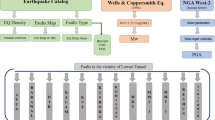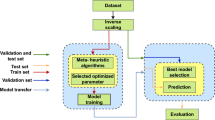Abstract
Three moderate earthquakes on November 9, 2022, November 12, 2022, and January 24, 2023 occurred in Western Nepal region of Magnitudes 5.8, 5.4 and 5.8 respectively. The epicenters were ∼100 km away from the Uttarakhand State Earthquake Early Warning System (UEEWS) network which consists of 169 seismic sensors in oval shape network with larger axis of about 280 km in East-West and 120 km in North-South in Uttarakhand-Dharchula seismic gap, a region of central seismic gap of Indian Himalaya. The strong motions recorded by UEEWS were fetched in real-time at the central server in Roorkee through dedicated private network. The central server issued notifications and warning alerts to the public of Uttarakhand on the mobile app, ‘Uttarakhand Bhookamp Alert’ installed by them. The success story of issuance of warning along with location of triggered sensors, epicenter of earthquakes and lead time people got in these events are elaborated in this article. Specially, these three moderate earthquakes albeit not triggered in the instrumented area, issuance of warning to the public by UEEWS network is noteworthy. Encouragingly, these events have been considered an example to rationalize establishment of earthquake early warning system in the other parts of the Himalayan regions.
Similar content being viewed by others
References
Askan, A., Karimzadeh, S. and Bilal, M. (2017) Seismic Intensity Maps for the Eastern Part of the North Anatolian Fault Zone (Turkey) Based on Recorded and Simulated Ground-Motion Data. In: Amer. Geophys. Union, pp.273–287, doi: https://doi.org/10.1002/9781118944998. ch10.
Atkinson, G.M. and Kaka, S.L.I. (2007) Relationships between felt intensity and instrumental ground motion in the Central United States and California. Bull. Seismol. Soc. Amer., v.97(2), pp.497–510, doi: https://doi.org/10.1785/0120060154.
Bajaj, S. and Sharma, M.L. (2019) Modeling Earthquake Recurrence in the Himalayan Seismic Belt Using Time-Dependent Stochastic Models: Implications for Future Seismic Hazards. Pure Appl. Geophys., v.176, pp.5261–5278, doi: https://doi.org/10.1007/s00024-019-02270-9.
Bhardwaj, R., Sharma, M.L. and Chen, Z. (2018) Lead time for cities of Northern India by using multiparameter EEW algorithm. Inter. Jour. Geophys., doi: https://doi.org/10.1155/2018/9086205.
Bhardwaj, R., Sharma, M.L. and Kumar, A. (2016) Multi-parameter algorithm for Earthquake Early Warning. Geomatics, Nat. Hazards Risk, v.7(4), pp.1242–1264, doi: https://doi.org/10.1080/19475705.2015.1069409.
Bilal, M., and Askan, A. (2014) Relationships between felt intensity and recorded ground-motion parameters for Turkey. Bull. Seismol. Soc. Amer., v.104(1), pp.484–496, doi: https://doi.org/10.1785/0120130093.
Böse, M., Sokolov, V. and Wenzel, F. (2009) Shake map methodology for intermediate-depth Vrancea (Romania) earthquakes. Earthq. Spectra, v.25(3), pp.497–514, doi: https://doi.org/10.1193/1.3148882.
Campbell, K.W. and Bozorgnia, Y. (2007) Campbell-Bozorgnia NGA Ground Motion Relations for the Geometric Mean Horizontal Component of Peak and Spectral Ground Motion Parameters. PEER Report 2007–02. Pacific Earthquake Engineering Research Center, University of California, Berkeley, CA. pp.1–265.
Chamoli, B.P., Kumar, A., Chen, D.Y., Gairola, A., Jakka, R.S., Pandey, B., Kumar, P. and Rathore, G. (2019) A Prototype Earthquake Early Warning System for Northern India. Jour. Earthq. Eng., v.25(12), pp.2455–2473, doi: https://doi.org/10.1080/13632469.2019.1625828.
Chaudhary, C. and Sharma, M.L. (2017) Probabilistic Models For Earthquakes With Large Return Periods In Himalaya Region. Pure Appl. Geophys., v.174, pp.4313–4327, doi: https://doi.org/10.1007/s00024-017-1667-y.
Choudhary, C. and Sharma, M.L. (2018) Global strain rates in western to central Himalayas and their implications in seismic hazard assessment. Nat. Hazards, v.94, pp.1211–1224, doi: https://doi.org/10.1007/s11069-018-3467-9.
Faenza, L., and Michelini, A. (2010) Regression analysis of MCS intensity and ground motion parameters in Italy and its application in ShakeMap. Geophys. Jour. Int., v.180(3), pp.1138–1152, doi: https://doi.org/10.1111/j.1365-246X.2009.04467.X.
Gansser, A. (1964) Geology of the Himalaya. Interscience Publishers, a division of John Wiley & Sons Ltd., London-New York — Sydney, doi: https://doi.org/10.1017/S0016756800040450.
Gauchan, D., Joshi, B.K. and Ghimire, K. (2017) Impact of 2015 Earthquake on Economy, Agriculture and Agrobiodiversity in Nepal. In: Proc. Sharingshop on Germplasm Rescue, pp.19–25.
Gutenberg, B. and Richter, C.F. (1956) Earthquake Magnitude, Intensity, Energy, and Acceleration: (Second paper), Bull. Seismol. Soc. Amer., v.46(2), pp.105–145.
Hershberger, J. (1956) A comparison of earthquake accelerations with intensity ratings. Bull. Seismol. Soc. Amer., v.46, pp.317–320.
Ishimoto, M. (1932) Echelle d’ intensit6 sismique et acceleration maxima. Bull. Earthq. Res. Inst., Tokyo Univ., v.10, pp.614–626.
Kawasumi, H. (1951) Measures of earthquake danger and expectancy of maximum intensity throughout Japan as inferred from the seismic activity in historical times. Bull. Earthq. Res. Inst., Tokyo Univ. v.29, pp.469–482, doi: https://doi.org/10.1016/B978-0-323-04579-7.00135-0.
Khattri, K.N. (1987) Great Earthquakes, Seismicity Gaps and Potential for Earthquake Disaster along the Himalaya Plate Boundary. Tectonophysics, v.138(1), pp.79–92, doi: https://doi.org/10.1016/0040-1951(87)90067-9.
Khattri, K.N. (1993) Seismic gaps and likelihood of occurrence of larger earthquakes in Northern India. Curr. Sci., v.64(11&12), pp.885–888.
Khattri, K.N., Chander, R., Gaur, V.K., Sarkar, I. and Kumar, S. (1989) New seismological results on the tectonics of the Garhwal Himalaya. Proc. Indian Acad. Sci., v.98(1), pp.91–109.
Kumar, P., Chamoli, B.P., Kumar, A. and Gairola, A. (2019) Attenuation Relationship for Peak Horizontal Acceleration of Strong Ground Motion of Uttarakhand Region of Central Himalayas, Jour. Earthq. Eng., v.25(12), pp.2537–2554, doi: https://doi.org/10.1080/13632469.2019.1634161.
Kumar, P., Kamal and Sharma, M.L. (2022a) Uttarakhand Earthquake Early Warning System: Performance and Validation. In: 8th Asia Conference on Earthquake Engineering N. L. National Applied Research Laboratories, and N. National Center for Research on earthquake Engineering (Eds.), pp.1006–1011, doi: https://www.ncree.org/conference/UserData/0/I20221109A/8ACEE_proceedings_v1.pdf.
Kumar, P., Pandey, B., Kamal and Kumar, A. (2022b) Site classification of seismic recording stations of Garhwal region of earthquake early warning system for Uttarakhand, India. Vietnam Jour. Earth Sci., v.44(3), pp.369–394, doi: https://doi.org/10.15625/2615-9783/17010.
Medvedev, S.V., and Sponheuer, W. (1969). Scale of seismic intensity. In: Proc. World Conf. Earthquake Engr. A-2, 4th, Santiago, Chile, 143–1.
Medvedev, S.W., Sponheuer, W. and Karnik, V. (1965) Seismic Intensity Scale Version MSK 1964, United Nations Educ. Sci. Cult. Organ. Work. Gr. Seism. Seism., no.1, pp.1–7.
Mittal, H., Wu, Y. M., Lal, M., Benjamin, S., Yang, M. and Gupta, S. (2018) Testing the performance of earthquake early warning system in northern India. Acta Geophys., no. 0123456789, doi: https://doi.org/10.1007/s11600-018-0210-6.
Murphy, J. R., and O’Brien, L.J. (1977) The Correlation of Peak Ground Acceleration Amplitude with Seismic Intensity and Other Physical Parameters. Bull. Seismol. Soc. Amer., v.67(3), pp.877–915.
Nakamura, Y. (2004) On a Rational Strong Motion Index Compared with Other Various Indices, 13th World Conf. Earthq. Eng. Vancouver, January 2004.
Neumann, F. (1954) Earthquake Intensity and Related Ground Motion. Univ. Press Seattle, Washington, 77p.
Pailoplee, S. (2012) Relationship between Modified Mercalli Intensity and peak ground acceleration in Myanmar, Nat. Sci., v.4(8), pp.624–630, doi: https://doi.org/10.4236/ns.2012.428082.
Savarensky, Y. F., and Kirnos, D.P. (1955) Elements of Seismology and Seismometry, Moscow.
Shabestari, K.T., and Yamazaki, F. (2001) A proposal of instrumental seismic intensity scale compatible with MMI evaluated from three-component acceleration records. Earthq. Spectra, v.17(4), pp.711–723, doi: https://doi.org/10.1193/1.1425814.
Sokolov, V. (2013) Three techniques for estimation of Instrumental Intensity: a comparison. In: The 2013 World Congress on Advances in Structural Engineering and Mechanics (ASEM13), pp.574–591.
Srivastava, H.N., Verma, M., Bansal, B.K. and Sutar, A.K. (2015) Discriminatory characteristics of seismic gaps in Himalaya. Geomatics, Nat. Hazards Risk, v.6(3), pp.224–242, doi: https://doi.org/10.1080/19475705.2013.839483.
Trifunac, M.D. and Brady, A.G. (1975) On the Correlation of Seismic Intensity Scales with the Peaks of Recorded Strong Ground Motion. Bull. Seismol. Soc. Amer., v.65(1), pp.139–162.
Wald, D. J., Quitoriano, V., Dengler, L.A. and Dewey, J.W. (2011a) Utilization of the Internet for Rapid Community Intensity Maps, Seismol. Res. Lett., v.70(6), pp.680–697, doi: https://doi.org/10.1785/gssrl.70.6.680.
Wald, D. J., Quitoriano, V., Heaton, T.H. and Kanamori, H. (1999a) Relationships between Peak Ground Acceleration, Peak Ground Velocity, and Modified Mercalli Intensity in California. Earthq. Spectra, v.15(3), pp.557–564.
Wald, D.J., Quitoriano, V., Heaton, T.H., Kanamori, H., Scrivner, C.W. and Worden, C.B. (1999b) TriNet “ShakeMaps”: Rapid Generation of Peak Ground Motion and Intensity Maps for Earthquakes in Southern California, Earthq. Spectra, v.15(3), pp.537–555.
Wald, D.J., Quitoriano, V., Worden, B., Hopper, M. and Dewey, J.W. (2011b) USGS “Did You Feel It?” Internet-based macroseismic intensity maps. Ann. Geophys., v.54(6), pp.688–707, doi: https://doi.org/10.4401/ag-5354.
Wald, D.J., Worden, B. C., Quitoriano, V. and Pankow, K.L. (2005) ShakeMap Manual: Technical manual, Users guide, and Software guide.
Wood, H.O. and Neumann, F. (1931) Modified Mercalli Intensity Scale of 1931. Bull. Seismol. Soc. Amer., v.21, pp.277–283.
Worden, C.B., Gerstenberger, M.C., Rhoades, D.A. and Wald, D.J. (2012) Probabilistic Relationships between Ground-Motion Parameters and Modified Mercalli Intensity in California, Bull. Seismol. Soc. Amer., v.102(1), pp.204–221, doi: https://doi.org/10.1785/0120110156.
Worden, C.B., Wald, D.J., Allen, T.I., Lin, K., Garcia, D. and Cua, G. (2010) A Revised Ground-Motion and Intensity Interpolation Scheme for ShakeMap. Bull. Seismol. Soc. Amer., v.100(6), pp.3083–3096, doi:https://doi.org/10.1785/0120100101.
Wu, Y.M., Teng, T., Shin, T.C. and Hsiao, N.C. (2003) Relationship between peak ground acceleration, peak ground velocity, and intensity in Taiwan. Bull. Seismol. Soc. Amer., v.93(1), pp.386–396, doi: https://doi.org/10.1785/0120020097.
Yaghmaei-Sabegh, S., Tsang, H.-H. and Lam, N.T.K. (2011) Conversion between Peak Ground Motion Parameters and Modified Mercalli Intensity Values. Jour. Earthq. Eng., v.15(7), pp.1138–1155, doi: https://doi.org/10.1080/13632469.2011.565861.
Zhang, P., Yang, Z., Gupta, H.K., Bhatia, S.C. and Shedlock, K.M. (1999) Global Seismic Hazard Assessment Program (GSHAP) in continental Asia. Ann. di Geofis., v.42(6), pp.1167–1190.
Acknowledgement
The authors are thankful to the Uttarakhand State Disaster Management Authority, Dehradun, Government of Uttarakhand for providing funds to run “Uttarakhand Earthquake Early Warning System”, and the National Center for Seismology (NCS) Ministry of Earth Sciences, Government of India for funding the pilot project “Development of Earthquake Early Warning System for Northern India”. The location data obtained from seismological network funded by THDCIL is thankfully acknowledged. The discussions held with the National Disaster Management Authority of India, Uttarakhand administration and NCS officials are gratefully acknowledged. The help provided by the Centre of Excellence in Disaster Mitigation & Management, Department of Earthquake Engineering and Department of Earth Sciences, IIT Roorkee, is thankfully acknowledged. Authors are also thankful to project laboratory and field staff who have worked tirelessly to operate and maintain the EEW system.
Author information
Authors and Affiliations
Corresponding authors
Rights and permissions
About this article
Cite this article
Kumar, P., Kamal, Sharma, M.L. et al. Successful Alert Issuance with Sufficient Lead Time by Uttarakhand State Earthquake Early Warning System: Case Study of Nepal Earthquakes. J Geol Soc India 99, 303–310 (2023). https://doi.org/10.1007/s12594-023-2311-3
Received:
Accepted:
Published:
Issue Date:
DOI: https://doi.org/10.1007/s12594-023-2311-3




